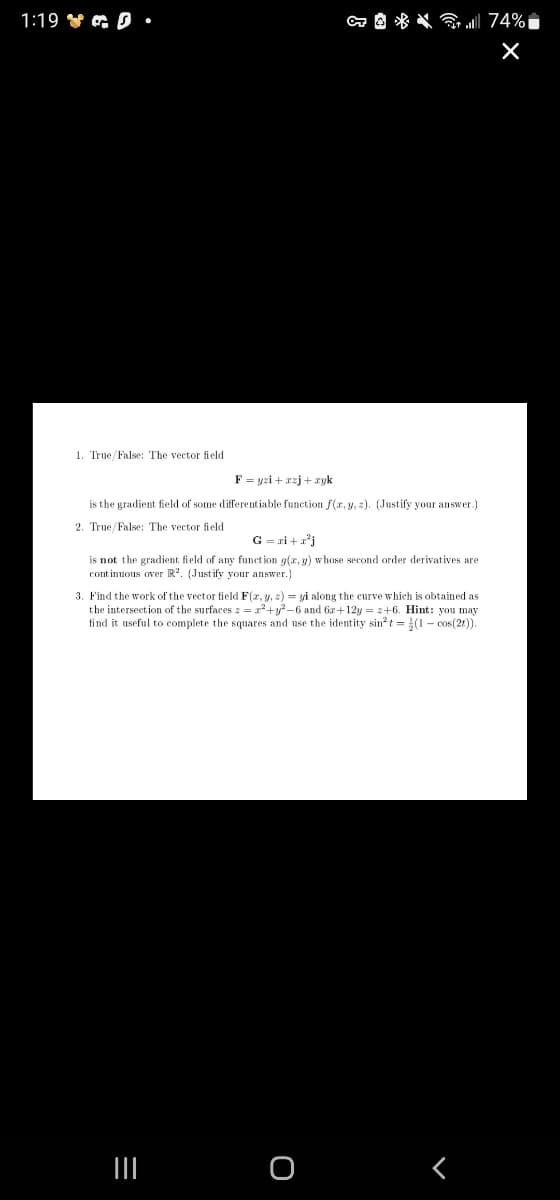3. Find the work of the vector field F(2, y, ) = yi along the curve which is obtained as the intersection of the surfaces z = a+y-6 and Ga +12y +6. Hint: you may find it useful to complete the squares and use the identity sint = (1- cos(2t)).
3. Find the work of the vector field F(2, y, ) = yi along the curve which is obtained as the intersection of the surfaces z = a+y-6 and Ga +12y +6. Hint: you may find it useful to complete the squares and use the identity sint = (1- cos(2t)).
Algebra and Trigonometry (MindTap Course List)
4th Edition
ISBN:9781305071742
Author:James Stewart, Lothar Redlin, Saleem Watson
Publisher:James Stewart, Lothar Redlin, Saleem Watson
Chapter9: Vectors In Two And Three Dimensions
Section9.FOM: Focus On Modeling: Vectors Fields
Problem 11P
Related questions
Question
100%
Please answer question 3 only.

Transcribed Image Text:1:19 Y G D •
a A * * 74%i
1. True/False: The vector field
F = yzi +xzj + xyk
is the gradient field of some diferentiable function f(x, y, 2). (Justify your answer.)
2. True/False: The vector field
G = ri +a*j
is not the gradient field of any funet ion g(x, y) whose second order derivatives are
continuous over R. (Just ify your answer.)
3. Find the work of the vector field F(r, y, 2) = yi along the curve which is obtained as
the intersection of the surfaces = a+y-6 and 6a+12y = 2+6. Hint: you may
find it useful to complete the squares and use the identity sin?t = (1- cos(2t)).
II
Expert Solution
This question has been solved!
Explore an expertly crafted, step-by-step solution for a thorough understanding of key concepts.
This is a popular solution!
Trending now
This is a popular solution!
Step by step
Solved in 4 steps

Recommended textbooks for you

Algebra and Trigonometry (MindTap Course List)
Algebra
ISBN:
9781305071742
Author:
James Stewart, Lothar Redlin, Saleem Watson
Publisher:
Cengage Learning

Algebra and Trigonometry (MindTap Course List)
Algebra
ISBN:
9781305071742
Author:
James Stewart, Lothar Redlin, Saleem Watson
Publisher:
Cengage Learning